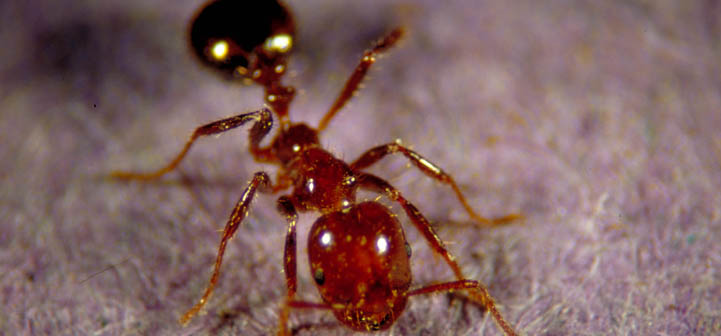FA Youth Home > Lessons: Living It Up in a Fire Ant Nest > Queen and Brood
Moving the Queen and Brood in a Fire Ant Mound
Although a fire ant mound is elaborate, the fire ants cannot regulate the mound’s temperature or humidity. Instead, they continually move the queen and brood (eggs, larvae and pupae) to the most suitable location within the mound.
Thus, in the early morning during summer, the brood and queen are usually near the top, on the sunny side of the mound, to take advantage of the warm, humid conditions.
As the sun dries out and heats the mound, the brood and queen are moved deeper into the mound. During drought, the fire ants may remain deep in the ground for long periods.
During the dry hot days of late summer and early fall, fire ants do not form new mounds or maintain older mounds. However, as soon as rains and moderate weather return, they rework the fire ant mounds, which become quite noticeable.
Although fire ants spend much time and energy setting up and maintaining their mound, the mound is not permanent. If it is disturbed, the ants often move and build a new mound several feet to many yards away.
Sometimes the ants move for no apparent reason. At other times, they move because of unfavorable conditions, such as too much shade, the presence of pesticides or the presence of other biological enemies (predators, diseases, etc.). However, some mounds may be disturbed repeatedly (such as mowing over them) without causing the ants to move.
Although mounds are important to a colony, they are not essential for its survival. Given a dark, protected site with enough moisture and food, fire ants will nest in a wide variety of sites (such as rotten logs, walls of buildings, under sidewalks and roads, in automobiles, or in dried cow manure). Fire ants have proven to be very adaptable.
